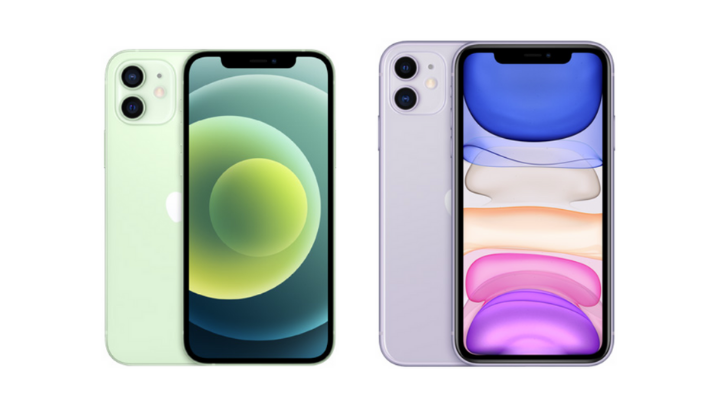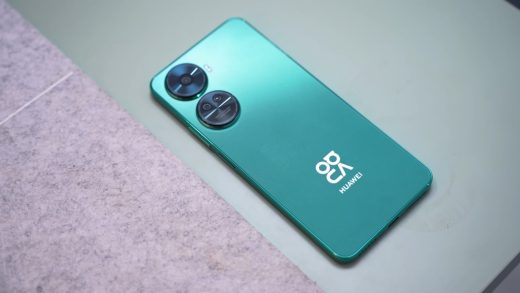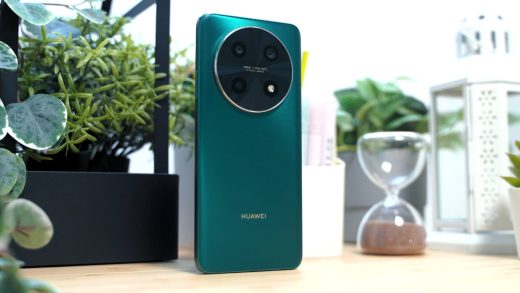Apple has recently launched its much-awaited iPhone 12 series today. Its base model, the iPhone 12, brings in several new features. This includes the new design and 5G connectivity. Some might be wondering if there’s any difference from last year’s iPhone 11. So, we decided to place Apple’s current and previous smartphones head to head, and here’s what we found out. 17
17
| iPhone 12 | iPhone 11 |
|---|---|
| 6.1-inch Super Retina XDR (2532 x 1170) True Tone OLED display, 460 ppi, 625 nits | 6.1-inch Liquid Retina HD (1792 x 828) True Tone LCD IPS display, 326ppi, 625 nits |
| HDR with Dolby Vision, HDR10, HLG, Wide Color (P3) coverage, Haptic Touch, 1200 nits (HDR) | Dolby Vision, HDR10, HLG, Wide Color (P3) coverage, Haptic Touch |
| Ceramic Shield (4x better drop performance) | Glass front and back |
| Apple A14 Bionic (5nm) | Apple A13 Bionic chip |
| 64GB, 128GB, 256GB storage | 64GB, 128GB, 256GB storage |
| TBA | 4GB RAM |
| Dual-rear cameras: • 12MP F1.6 (main) • 12MP F2.4 (ultrawide) | Dual-rear cameras: • 12MP F1.8 (main) • 12MP F2.4 (ultrawide) |
| 12MP F2.2 TrueDepth front camera | 12MP F2.2 TrueDepth front camera |
| OIS, 2x optical zoom, 5x digital zoom, Brighter True Tone flash with Slow Sync, Smart HDR 3, Night Mode (front and rear), Deep Fusion (front and rear cameras), Night Mode Time-lapse, Dolby Vision HDR video recording up to 30fps, 4K video recording at 60fps, 1080p slo-mo video recording up to 120 fps (front camera) or 240 fps (rear cameras) | OIS, 2x optical zoom, 5x digital zoom, Brighter True Tone flash with Slow Sync, Next-generation HDR, Night Mode (rear cameras), Deep Fusion (rear cameras), 4K video recording up to 60fps, 1080p slo-mo video recording up to 120 fps (front camera) or 240 fps (rear cameras) |
| Dual-SIM (nano + eSIM) | Dual-SIM (nano + eSIM) |
| 5G (sub-6 GHz), 4G LTE (with 4x4 MIMO) | 4G LTE (with 2x2 MIMO) |
| Smart Data Mode (auto switches between 5G and LTE) | -- |
| VoLTE | VoLTE |
| WiFi 6 with MIMO | WiFi 6 with MIMO |
| Bluetooth 5.0 | Bluetooth 5.0 |
| NFC | NFC |
| GPS, GLONASS, Galileo, QZSS, and BeiDou | GPS, A-GPS, GNSS |
| FaceID | FaceID |
| FaceTime HD (1080p) over 5G or Wi-Fi | FaceTime |
| IP68 water and dust resistance (maximum depth of 6 meters up to 30 minutes) | IP68 water and dust resistance (maximum depth of 2 meters up to 30 minutes) |
| Compatible with MagSafe accessories and wireless chargers, compatible with 20W adapter or higher | Compatible with 20W adapter or higher |
| Wireless charging (MagSafe 15W, 7.5W Qi) | 7.5W Qi wireless charging, 18W wired fast-charging |
| Lightning port | Lightning port |
| iOS 14 | iOS 14 |
| 146.7 x 71.5 x 7.4 mm | 150.9 x 75.7 x 8.3 mm |
| 162g | 194g |
| Black, White, Product Red, Green, Blue | Black, Green, Yellow, Purple, Product Red, White |
Summary of improvements in the iPhone 12:
• Better display resolution
• Lighter and thinner design
• Latest A14 Bionic chipset
• 5G connectivity
• HDR video recording with Dolby Vision
• More camera features
• 15W MagSafe wireless charging
At first look, the iPhone 12 looks like an upgraded version of the iPhone 5 with an all-screen display. Upfront, the iPhone 12 doesn’t look far from its predecessor. Both iPhones have the same notch design, which houses the front camera, stereo speaker, and microphone. However, the older iPhone 11 has slightly thicker bezels than the iPhone 12 and has a glass front and back. The iPhone 12, on the other hand, has Ceramic Shield with up to four times protection against accidental drops. Both also have the same screen size at 6.1 inches. However, the former is equipped with a new Super Retina XDR OLED panel with up to 1200nits for HDR videos, while the latter has a regular Liquid Retina HD IPS LCD with a typical brightness of 625 nits. The iPhone 12 also has a higher resolution at 2532 x 1170 and supports HDR content with Dolby Vision and HDR10. Meanwhile, the iPhone 11 has an HD resolution at 1792 x 828 and supports regular HDR content and HDR10.
In terms of design, the iPhone 12 is lighter and thinner at 162g and 7.4mm. On the other hand, the iPhone 11 has a thickness of 8.3mm and weighs 192g.
As for the processor, the iPhone 12 is powered by the latest A14 Bionic chipset based on a 5nm architecture. It is mated with the next-generation Neural Engine that allows the smartphone to shoot in HDR and more efficient power management. Meanwhile, the iPhone 11 has the older A13 Bionic processor with a third-generation Neural Engine.
The iPhone 12, just like other Android smartphones, now boasts a sub-6 GHz 5G connectivity paired with Smart Data Mode that automatically switches internet connectivity between 5G and LTE. Its predecessor, the iPhone 11, has 4G LTE with 2×2 MIMO. With that being stated, the iPhone 12 offers better FaceTime video calls at HD over 5G or Wi-Fi connection.
The iPhone 12 also has a better LTE connectivity with 4×4 MIMO and GPS navigation, including GLONASS, Galileo, QZSS, and BeiDou. Both have Apple’s Ultra Wideband chip for spatial awareness, WiFi 6, NFC, FaceID, and Bluetooth 5.0. Both are also IP68-certified for water and dust resistance. The only difference is that iPhone 12 has a deeper maximum depth at 6 meters for 30 minutes while the iPhone 12 only has 2 meters.
Although both iPhones have the same dual rear cameras with 12MP main and 12MP ultra-wide sensors, the iPhone 12 has a wider aperture for its main lens at F1.6. It also has Smart HDR 3 for taking photos, and exclusive camera modes such as Deep Fusion, Night Mode Time-lapse, Deep Fusion and Night Mode for front and rear cameras, and Dolby Vision HDR video recording up to 30fps. The iPhone 11, on the other hand, can capture images through its Next-generation HDR, as well as Night Mode and Deep Fusion for rear cameras. As for the front camera, both have a single 12MP front camera.
Perhaps, one of the major changes for the iPhone 12 is its wireless charging. The iPhone 12 boasts two wireless charging technologies: MagSafe at 15W and Qi at 7.5W. It is also compatible with 20W adapters or higher, along with several MagSafe accessories, including a wireless charging-friendly and magnetic case with a wallet. The iPhone 11, however, only has the 7.5W Qi wireless charging and 18W wired fast charging. Like its successor, it is compatible to use with 20W and higher adapters. Do note that the charging adapter and wired EarPods for both smartphones are now sold separately.
Should you upgrade?
If you look forward to enjoying 5G, better display at a higher resolution, additional device protection with Ceramic Shield, better performance, faster wireless charging, and HDR video recording and picture taking, then switch to the iPhone 12. However, you would need to wait a little longer since it is yet to launch its local pricing and availability in the Philippines. The iPhone 11 is for you if you don’t mind using an LTE iPhone with a previous chipset, HD display, without HDR video recording, as well as Night Mode and Deep Fusion camera features for front cameras, and prefers to stick with the Qi wireless charging and 18W wired fast charging.
What do you guys think? Let us know your thoughts in the comments below.































Why didn’t you put the price?
Because we don’t have the PH prices yet for the iPhone 12.